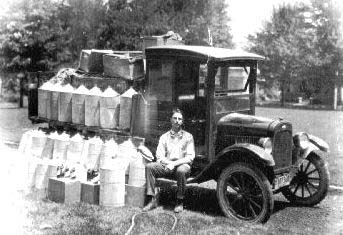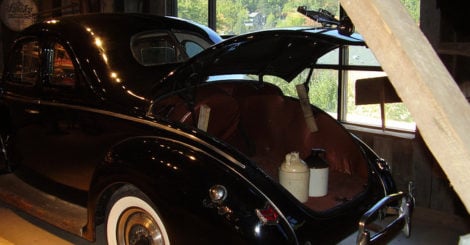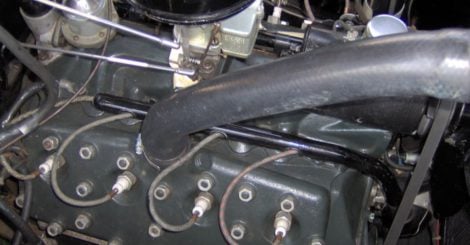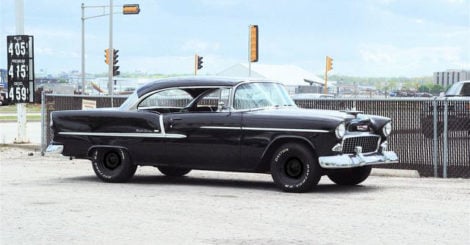Making moonshine is considered a tradition; it is a part of Appalachian and Southern culture that thrives throughout the history of the South. However, if you turn back the pages on your calendar you will see that making moonshine wasn’t always an art or a tradition. For many, it was a way of life, and/or a means of survival. Men would brew moonshine to ensure that their families would have food on the table and a roof over their heads. Former Stock car driver Louise Smith described life in the south by saying “Honey, everybody was poor. Back in those days there just wasn’t any money.”
The History of Moonshine
The art behind making moonshine is older than the USA since it was began in Colonial times in Appalachia by the Scots-Irish immigrants who had settled in the Appalachian in search of freedom. The immigrants soon discovered that the Appalachian region was great for growing corn.
They didn’t bring much with them, but many had Whiskey making skills that they learned back in the Celtic hills. This quickly led to a little necessitative ingenuity and they soon started using corn to make whiskey–and boom, moonshine was born!
Fast forward to 1920 when Prohibition began and the demand for Moonshine began to sky rocket inside America’s biggest cities. Soon a new business was born, which involved producing Moonshine illegally and hauling to the cities to make a profit.
For many, it was a way of life, and/or a means of survival. Men would brew moonshine to ensure that their families would have food on the table and a roof over their heads.
However, when it comes to doing anything illegal the law always tends to find out. It didn’t take long before the Government started sending out Federal Agents who were nicknamed “Revenuers”, and “G-Man” to try and catch the illegal moonshiners and put a stop to it; which would go on for several years.
Speakeasies were often found in secret spots in the big cities during the time of prohibition.
In 1933 Prohibition had finally come to an end, but this only slightly slowed down the demand for Moonshine. The tax free, cheap price and high alcohol content of moonshine kept it in high demand throughout the Southern U.S. and major cities all over the US.
Due to the liquor being tax free, the Government didn’t want to lose any tax revenue so they continued to send out the Revenuers to try and shut down the illegal stills in operation. This proved to be a very difficult task because most of the stills were hidden deep in the mountains and hills of Appalachia which made them difficult to locate. This made distilling and producing the whiskey easy for the “shiners” but the real challenge was getting the moonshine from the stills to the cities. The G-Men would hide out all over the back country roads to try and stop the runner’s cars before they could deliver their loads.
To get their product delivered safely, the Moonshiners would hire “runners” to haul and transport the liquor. Since the roads were full of the Government agents, the runners would have to transport the liquor after midnight when the roads were clear, so they would be able to drive fast enough to out run the Revenuers. However, a runner would need more than just clear roads and the cover of darkness to out run an agent, his car would have to be the fastest car on the road!
The Cars
Moonshiners would modify and hop up their cars to out run the Government issued economy cars that agents used. When it came to modifying a Moonshine car, the number one rule was not to attract any attention.The car had to appear stock, it couldn’t have any fancy paint jobs, chrome pipes, nice wheels, or anything else that would attract attention and make the car stand out on the road.
The car that was most commonly used by the shiners was the 1940 Ford Coupe. The were many reasons this model Ford made such a great “runner.” Besides for it being a pretty common car on the roads at that time, the 1940 Ford was powered by a Flathead V8 engine which was ideal to make horsepower.
Another reason these Ford’s were so popular with the runners was because of the large trunk space and the ability to easily modify the suspension to carry such heavy loads. The large trunk capacity and increased suspension load allowed much larger runs of “white lightning” to be carried during a single trip.
Other cars such as the Oldsmobile Rocket 88s, Dodge Coronets, and Chevy Coupes were also used as haulers. Pick-up trucks, sedans and other vehicles were used as well, but weren’t as common as they were spotted first. Former shiner Willie Clay Call even used a 1961 Chrysler New Yorker, even though it was one of the Luxury cars of that era. Fortunately for good ol’ Willie, he found his car to be very effective in tricking johnny law and the G-men.
The First Modifications
Besides for it being a pretty common car on the roads at that time, the 1940 Ford was powered by a Flathead V8 engine which was ideal to make horsepower.
Sometimes if a runner needed a lot of power Superchargers and Turbochargers were also added to the engine (but they were very careful not to draw attention to these cars, unlike the power upgrades of today). Another common modification was to increase the cars displacement for more horsepower, this was done by over boring the cylinders but you can only bore an engine so big. Benny Parsons also said “Soon they had to go to other engines, they would swap in the Cadillac V8s to get all the horsepower they could, or even swap in the old Ambulance engines for long and fast hauls.”
Some runners claimed that they were able to make over 500 horsepower with their modifications, Willie Clay Call was noted as mentioning that he was able to get his ’61 Chrysler over 180 miles per hour. Imagine that in the 60s on the open roads?
Hopping up cars and engines to out run the law wasn't just for fun like the TV Shows of the 70s and 80s - these guys meant serious business back then.
The loads that these cars carried were very heavy and they would put the cars under great stress while driving at high speeds. The loads were typically 100 to 180 gallons of shine, this would weigh in at around 800 lbs. so modifying to handle these heavier loads at higher speeds was a must. Although, many cars did see tragedy and wrecks due to the chase speeds and load stress on the vehicles.
The cars had to be able to handle around a curve at high speeds, while being chased and carrying these heavy loads. This was not an easy task at first but do to their ingenuity the shiners soon found a solution; add more leaf springs to the suspension to stiffen the suspension, which would allow them to carry more shine. Their were also other creative modifications like “triangulating” the leaf packs at a bit more angle to help with the load weight distribution and handling (hence many of our suspension designs of today).
Both performance and suspension modifications done for necessity gave way to many of today's modern upgrades.
The suspensions of these cars where so stiff, that the rear of the car would sit high up in the air when there was no load inside of the car. After it was loaded up, the car would sit back down level, and the ride comfort would return (slightly) but these machines were not about comfort, they were built for one reason, and one reason alone–running shine.
Tactics to hide the loads inside the car were also used. Shiners would do things like hiding it in the rear of the car and disguise it as the rear seat. Another tactic was to make the car a “tanker car.” They would keep a hidden tank full of moonshine hidden under the cars floorboards, or it would even be hidden inside of the gas tank.
To help make sure the police didn’t try to track them down, most moonshiners would use two license plates. They would use their normal license plate during the day while the car was a daily driver and at night they would use another license plate. This license plate could be from an old wrecked car or stolen off of a random car.
The Chase
For a moonshine runner, a successful run was a run that had little to no excitement. However, as we know, this didn’t always happen. When the chases began, you could guarantee that there would be some excitement because most shiners wouldn’t give up easily. Benny Parsons describes the chases as “It was all about going as fast as you can, because the guy behind you was gonna put you in jail!”
The chases would typically happen late at night along the back country roads, throughout Appalachia. The runners would rely on their knowledge of the local roads and use it to their advantage. Most of the Revenuers didn’t know the areas or backroads as well, so it made it more difficult to navigate and drive during a chase. Retired Agent Joe Carter states “Those kids knew every damn curve in the county and how much speed they could take it at in certain weather conditions.”
The shiners had some other modifications that helped when they couldn’t shake off a Revenuer. They would install switches that turned off their tail lights so they wouldn’t be followed, and they had a switch to turn off their brake lights so the agents couldn’t see where they were braking around the turns. Runner Willie Clay Call was known for using this trick, more than one lawman ended up in ditch off the side of the road when he flipped that switch.
Those kids knew every damn curve in the county and how much speed they could take it at in certain weather conditions.
NASCAR legend and former shine runner Junior Johnson had a variation on this move. Not only would he turnaround 180 degrees but he would also charge head on at the agents car. As you can image this would really scare the living daylights out of the agents and all of them turned away before being hit. “Didn’t wanna get killed, I don’t think over catchin’ a bootlegger and I thought I was too good a driver to get killed” said Johnson.
Agent Joe Carter also had something to say about his move “Junior had a reputation for being a guy who had a hotrod with a one-brake wheel. He could go down the road and hit that brake and turn around in one lane of a highway and head back the other way at great speed.” Junior Johnson like many of the other runners was just teenagers when they made deliveries of illegal liquor. Johnson actually started when he was just fourteen, before he even had his license. In his own words “I didn’t need one, ‘cuz I wasn’t gonna stop!”
Birth of Stock Car Racing
On the weekends the runners would brag and argue with each other about who had the fastest car and which one of them was the best driver. This lead to moonshiners driving out to open dirt fields to race each other. Soon local fairground promoters would see this as a money making opportunity and start selling tickets for locals to come see the races.
They would run local advertisements that would say “Come see the craziest dare devils on the road, the stock car drivers” or “Come see bootleggers and moonshiners race.” This proved popular with the local crowds and soon many of those dirt fields become permanent tracks with large stands. After church on Sunday, the races became the place to be.
This was literally the birth of stock car racing. By 1948 several permanent stock car tracks existed around the country. Later that year, several promoters met with Bill France Sr. and formed the National Association for Stock Car Auto Racing better known as NASCAR. While this is just a brief overview, check out some more in-depth history on Red Vogt [10] and some of the early years.
Instead of being involved in chases with the law, the runners were now involved in chases with each other. Their skills of running from the law and driving at high speeds on dirt back roads greatly helped to grow NASCAR racing and the racing excitement. Since most of the tracks in the early days of NASCAR were dirt, the skills learned from driving on the back country roads helped prevent the experienced drivers from spinning out.
A few of the moonshiners became big NASCAR stars, the biggest that helped grow the popularity of the sport was the aforementioned, Junior Johnson. The skills he learned from running from the law since age 14 helped him become one of the greatest drivers of all time. He had over 300 starts and over 50 wins in his career.
The skills Johnson learned from running from the law since age 14 helped him become one of the greatest drivers of all time.
Several other moonshiners such as Benny Parsons, Charlie Mincey, Lee Petty, Tim Flock and several others all became famous NASCAR drivers. They would help take NASCAR from a small Sunday hobby that was done by shiners and turn it into one of the largest spectator sports in the world.
Even though the days of the moonshiner runners are long gone, their history created and gave way to the custom cars and hot rods that we all know and love.
Special thanks go out to one of our new up and coming Rod Authority writers, Josh Couter [11] for compiling this special feature.








